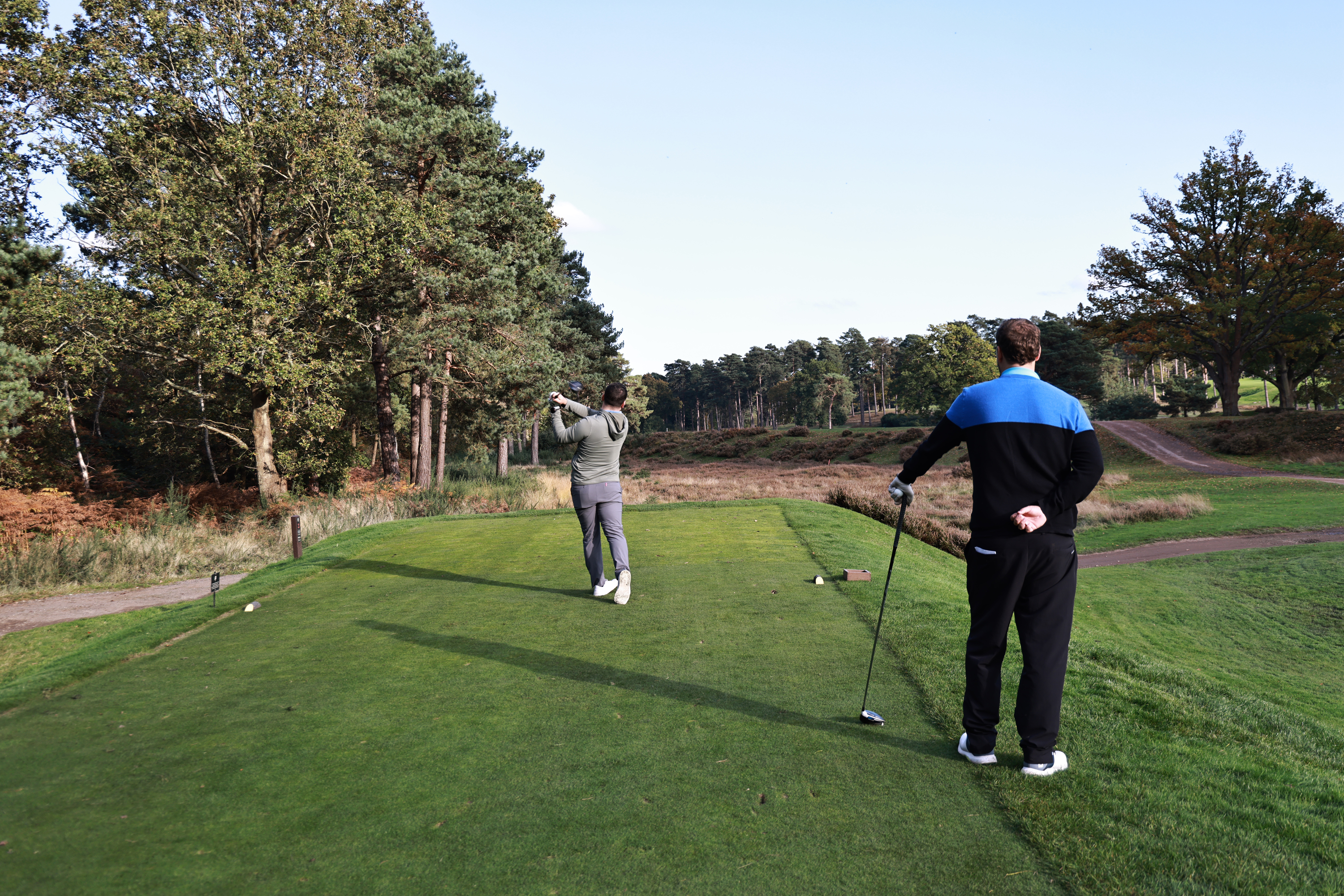
Foursomes and greensomes are both alternate shot, pairs formats of the game of golf. Both are great fun and ask some different questions from participants compared to individual golf. You have to play as a team, support and trust your partner to achieve success.
The two formats are similar, played in teams of two and can be played strokeplay, Stableford or matchplay or but there's a key difference to note between foursomes and greensomes. And that key difference comes on the tee shots.
In foursomes, partners use just one ball from tee to hole, and play alternate shots with it. In some places, the format is simply known as Alternate Shot - for fairly obvious reasons.
Players alternate tee shots - Player A takes the odd holes and Player B takes the even holes. After the tee shot is struck, players alternate shots until the ball is in the hole.
In greensomes, things are different in that, both players tee off on every hole. The team can then select which of the drives should be played and then the format becomes alternate shot. So, if Player A's tee shot is selected on a hole, Player B will hit the second shot. From that point on, the team plays alternate shots until the ball is in the cup.
What are the advantages of playing foursomes golf

Foursomes counts as a one-ball game... That's because, even though there are two players, only one ball is in play between them. Some clubs have slots in the day when only two ball or foursomes play is allowed. So, if you have four people wanting to play at that time, you can still play together.
If played correctly, foursomes should make for a speedy 18-holes. If Player B, who isn't teeing off walks down the fairway, they can be at the ball and ready to play as soon as Player A has hit off. Player B can not only act as a forecaddie to see where the ball has gone but can also play promptly when they've located it.
What are the best tactics in foursomes and greensomes

There are two schools of thought when it comes to the ideal partnership for foursomes and greensomes. One says that pairs with similar games work best together, particularly on courses they know well. The reason being - they find themselves in familiar positions and are firing into greens from similar distances and angles that they are used to in individual play.
The other side of the argument is that players with different games fair better as they get the best of both worlds. As an example, if one member of the pair fades the ball and the other hits a draw, some clever planning can ensure that each player faces the shots, (particularly tee shots) that are suited to their shot shape. Or, if one is a good driver of the ball and the other a good short game player, ordering can be planned to get the most from those attributes.
In greensomes, an often used strategy is for the shorter hitter to play off first from the tee and secure a "safe" drive in the fairway. That allows the longer hitter to have a go for it and try to play more aggressively. Ideal on risk and reward holes.
What are the handicap allowances in foursomes and greensomes

Working out handicaps for foursomes and greensomes is a little different under the World Handicap System.
Firstly, you work out each player's Course Handicap, rounding to a whole number. Then you work out the pair's handicap for foursomes or greensomes.
In foursomes the handicap is 50% of the pair's combined course handicaps. In greensomes you take 40% of the higher handicapper's course handicap and add that to 60% of the lower handicapper's course handicap, then round to a whole number after doing the maths.
So - if Player A is off 16 and Player B is off 11, then Player A will have a Handicap Allowance of 40% and Player B 60%. This will equal 6.4 and 6.6, which added together gives the team 13 shots.







